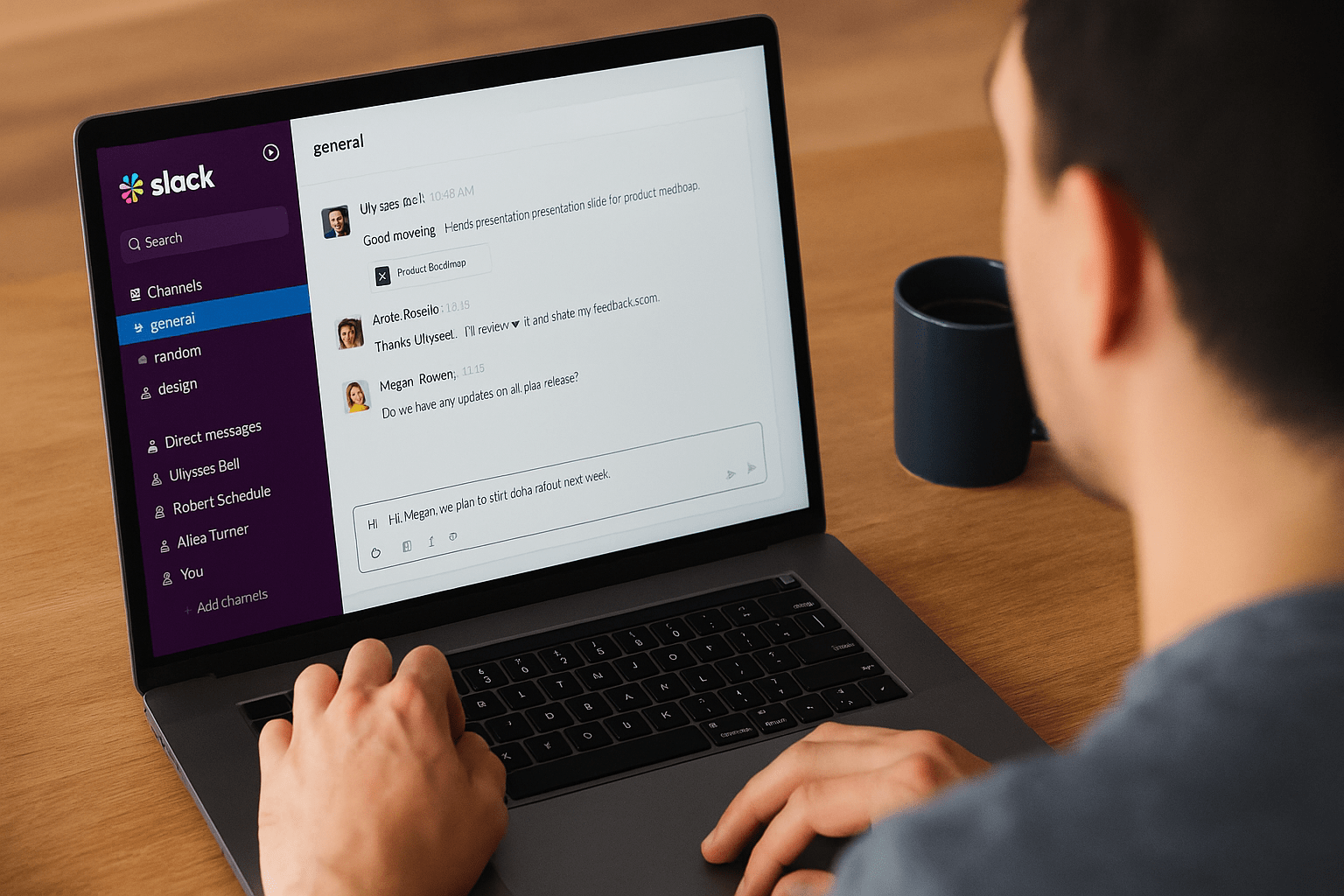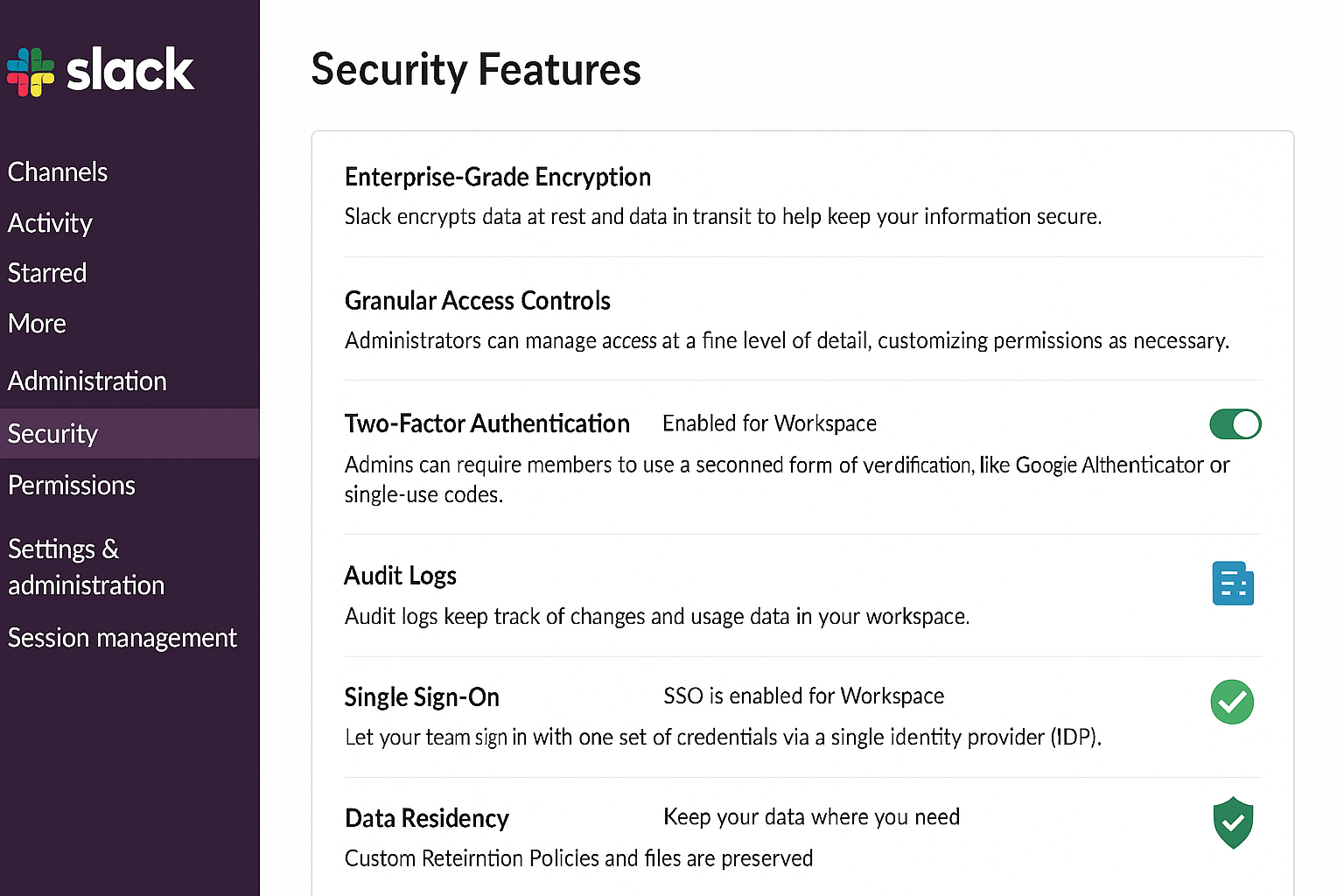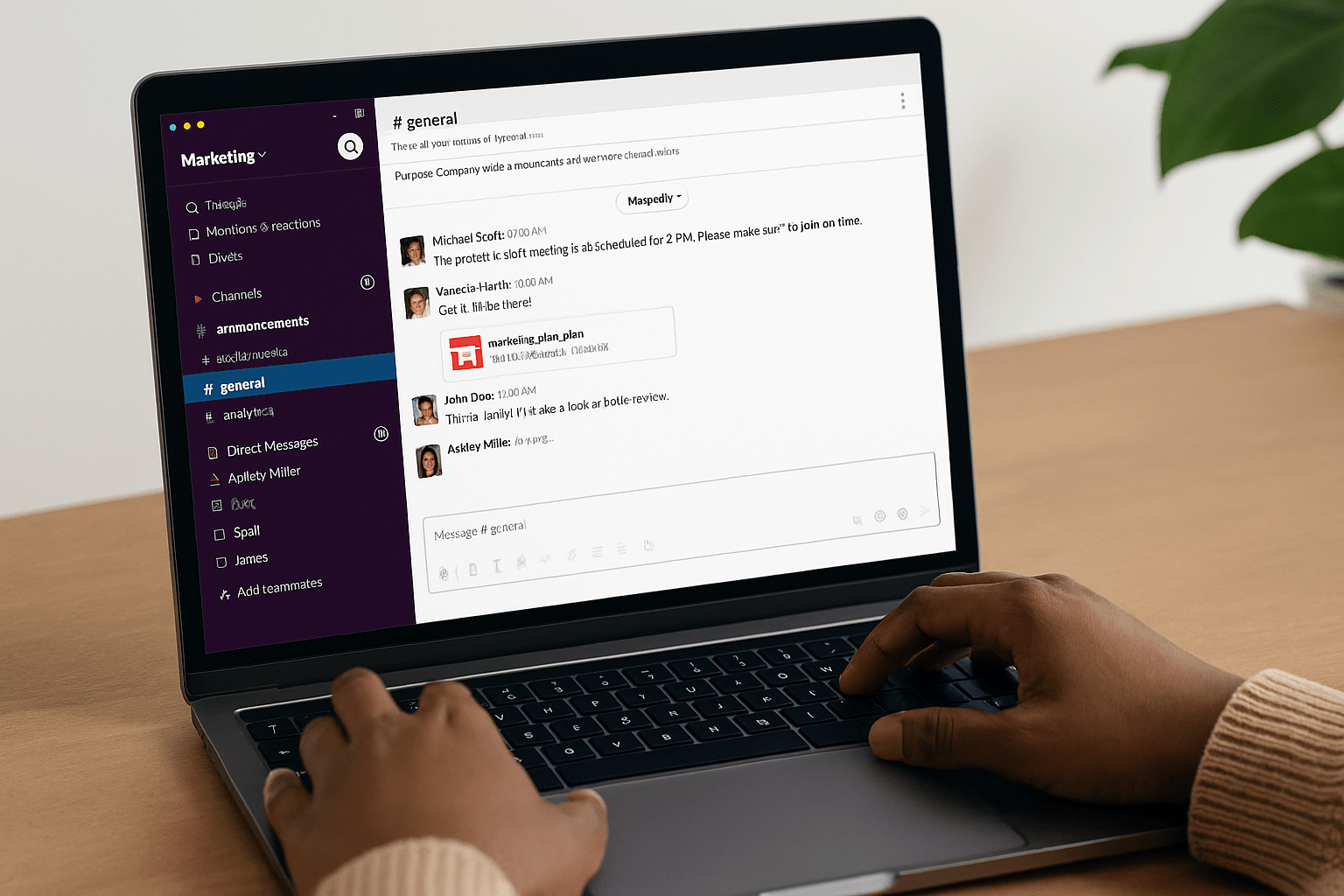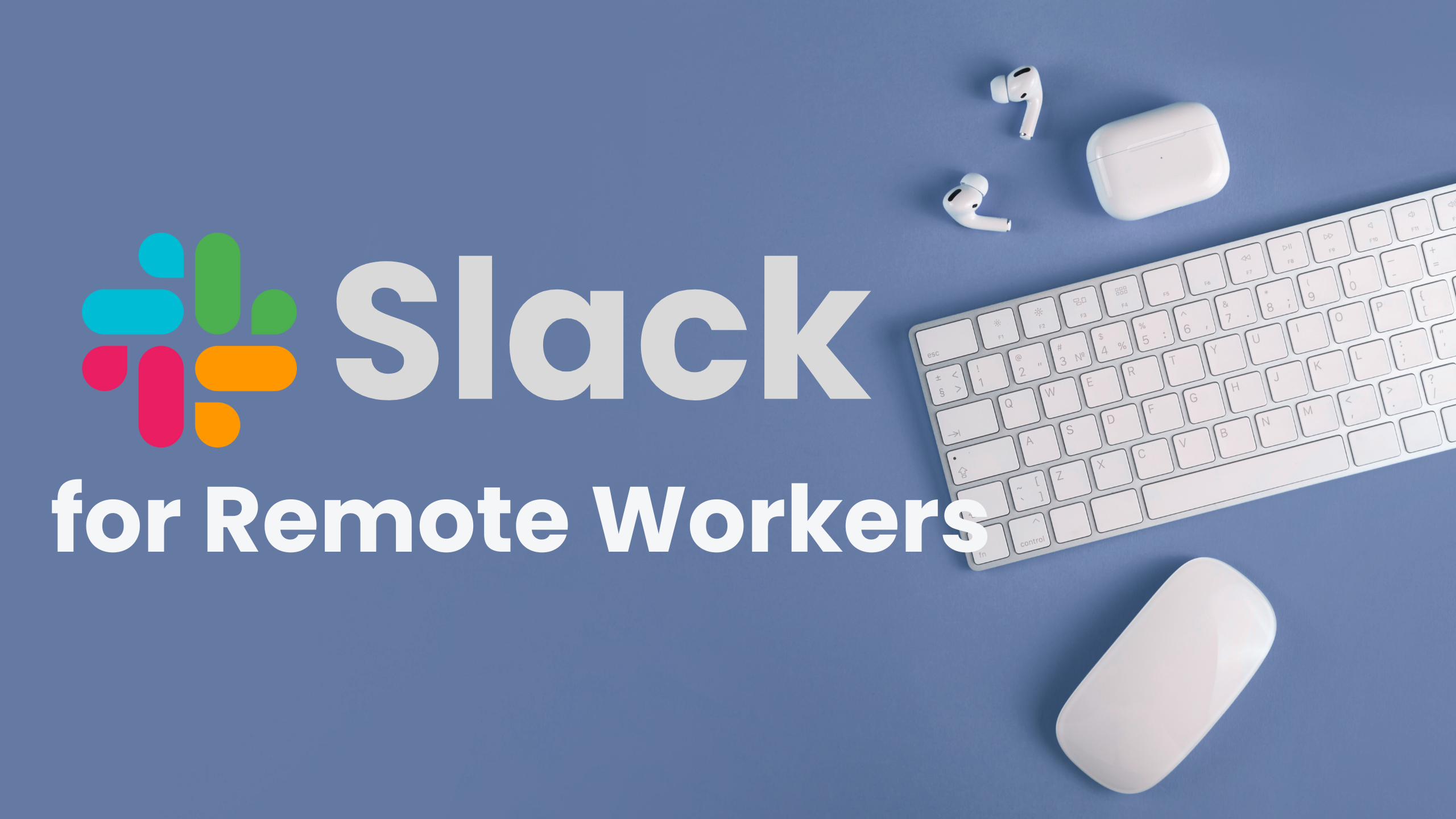In today’s fast-paced digital workplace, choosing the right team communication platform isn’t enough you need to know how to leverage collaboration tools for remote productivity. As remote work continues to redefine business operations worldwide, tools like Slack are emerging not just as messaging apps, but as complete virtual workspaces. However, the real advantage lies not in just using Slack, but in understanding how to use Slack effectively for remote work.
Remote teams often struggle with scattered updates, misaligned goals, and delayed feedback loops. The solution? Learning best practices for Slack communication in distributed teams. Whether you’re managing a startup, leading a fully remote marketing agency, or freelancing across multiple time zones, optimizing Slack usage can drastically improve your workflow, accountability, and team morale.
The biggest challenge in remote work isn’t always distance it’s disconnection. Teams lose time not because they’re apart, but because they lack streamlined systems to share updates, align goals, and clarify tasks. That’s where the strategic use of Slack comes into play. It bridges gaps in time zones, work styles, and project complexity but only if you know how to use it to its full potential.
Whether you’re a startup founder, a remote team manager, or a freelance collaborator, understanding how to use Slack effectively for remote work is no longer optional it’s a must-have skill in the digital age. From minimizing distractions to maximizing engagement, Slack can transform chaotic communication into a smooth workflow when implemented with the right strategy.
Using Slack effectively means more than just sending messages it involves setting up efficient Slack channels for remote collaboration, automating routine check-ins, and maintaining digital boundaries that support work-life balance. With the right structure, Slack becomes a centralized productivity hub for remote workers, helping teams stay informed, focused, and connected without the noise.
This guide will walk you through smart strategies, proven frameworks, and insider tips to ensure Slack is working for you not against you in your remote workflow.
Mastering Slack: Tips and Tricks for Remote Team Communication
In today’s fast-evolving digital landscape, communication is the glue that holds remote teams together. Whether you’re working across time zones or just across town, having a streamlined, intuitive communication platform is essential. That’s where Slack comes into play.
Slack has become the go-to platform for distributed teams, startups, and large enterprises alike. But the key isn’t just using Slack it’s mastering it. In this guide, we’ll dive deep into how to use Slack effectively for remote work, covering practical tips, platform insights, and expert tricks that will level up your team’s productivity.
What is Slack?
In the simplest terms, Slack is a cloud-based digital workspace built to streamline team communication, but calling it just a messaging app doesn’t do it justice. Slack acts as the central communication hub for remote workers, offering a structured yet flexible platform where conversations, files, updates, and tools all come together in real time.
Designed with distributed teams in mind, Slack replaces fragmented communication methods like long email threads or clunky video calls. It allows users to create focused channels for departments, projects, or topics, enabling every conversation to stay on-topic and searchable.

Unlike traditional chat tools, Slack integrates deeply with hundreds of productivity platforms, turning it into an all-in-one remote work software solution. From tagging teammates to sharing Google Drive links, reviewing Figma designs, or jumping into Zoom meetings Slack becomes the operational heartbeat of virtual teams.
What sets Slack apart is its adaptability. Whether you’re managing a startup or working asynchronously across continents, Slack evolves with your workflow. Its rich API and open app directory allow teams to customize their communication ecosystem, making it a preferred choice for businesses aiming to scale without sacrificing efficiency.
For those searching for collaboration platforms tailored for remote teams, Slack consistently ranks among the top due to its intuitive UI, powerful integrations, and robust organizational features. It’s more than a tool it’s the foundation for a connected, agile, and transparent workplace culture.
Slack is a cloud-based messaging app designed to help teams collaborate more efficiently. Instead of messy email threads and scattered tools, Slack centralizes communication through:
- Channels (for teams, projects, or topics)
- Direct messages (DMs) for private or small group convos
- App integrations (over 2,000 options like Google Drive, Zoom, Asana, etc.)
- Searchable history, pinned files, and thread replies
- Workflow automation using built-in tools or integrations like Zapier
Slack turns real-time communication into an organized hub for your team even if they’re never in the same room.
Slack Core Functionalities: The tool for Seamless Remote Collaboration
What truly sets Slack apart from other workplace tools is not just its popularity but the depth of functionality it brings to remote teams. Far from being a simple chat platform, Slack offers a robust suite of features that allow it to adapt to diverse workflows, communication styles, and operational demands.
1. Channel-Based Architecture
At the heart of Slack lies its powerful channel-based communication system. Channels act as digital rooms where teams can collaborate around specific themes be it client projects, departments, product features, or casual conversation. This structure minimizes cross-talk, preserves conversation history, and creates a focused space for productive dialogue.
Channels can be public (open to the entire workspace) or private (invite-only), giving organizations control over visibility and access. You can also invite external collaborators into shared channels, making Slack ideal for managing vendors, freelancers, or client partnerships all from within the same workspace.
2. Threaded Conversations
To keep discussions from spiraling into chaos, Slack supports threaded messaging. This functionality allows users to reply to specific messages within a thread, keeping the main channel uncluttered and making it easier to follow topic-specific discussions. It’s a simple yet powerful feature that preserves context while maintaining order.
3. Advanced Search Capabilities
Slack’s global search tool is one of its most underrated assets. Users can filter conversations by channel, file type, date range, or person, and even search within pinned messages or starred items. For large teams dealing with high message volumes, this function becomes indispensable for retrieving decisions, assets, and links without wasting time.
4. Workflow Automation
Through its built-in Workflow Builder, Slack allows teams to automate repetitive tasks without needing to write code. For example, you can set up automated onboarding messages for new team members, daily reminders for stand-ups, or approval chains for content drafts. These lightweight automations help remove friction from daily operations.
5. Status and Presence Settings
Slack lets users set custom statuses to indicate availability, current tasks, or out-of-office updates. This feature is especially important in remote settings where colleagues are not in the same timezone or working hours. A well-defined status helps manage expectations and allows asynchronous communication to flow without delays or guesswork.
6. App Integrations and Slash Commands
Slack supports integration with thousands of apps, allowing users to pull live data, update task boards, launch video calls, or even approve expense reports all without switching tabs. Slash commands like /remind, /poll, or /zoom bring speed and interactivity to the workflow, reducing time spent navigating multiple tools.
7. Security and Admin Controls
Slack includes a range of enterprise-ready features such as two-factor authentication, single sign-on (SSO), audit logs, and data encryption at rest and in transit. Admins can also control user permissions, monitor usage, and manage access to sensitive information, making it a secure choice for organizations that prioritize data protection.
Slack Security Features: Built for Trust, Designed for Scale
In an era where data breaches and privacy lapses make headlines daily, Slack stands out by offering a security-first approach to digital communication. For remote teams handling sensitive conversations, client data, and internal documents, Slack’s built-in safeguards aren’t just nice to have they’re essential.

1. Enterprise-Grade Encryption
Slack encrypts all data both in transit and at rest. This means that every message, file, or integration data point is protected as it moves between devices and servers. While this may sound like standard protocol, Slack continuously updates its encryption models to align with the latest industry standards making it a proactive player in enterprise-grade security.
2. Granular Access Controls
Slack allows workspace administrators to define detailed permission levels for every member or guest. Whether it’s restricting access to private channels, managing app permissions, or disabling external sharing, these granular access controls give organizations the flexibility to operate securely without slowing down collaboration.
3. Two-Factor Authentication (2FA)
For added protection, Slack supports two-factor authentication, allowing users to link their accounts to mobile authenticator apps. This extra layer ensures that even if login credentials are compromised, unauthorized access is still blocked. Admins can enforce 2FA across the entire organization to maintain security compliance.
4. Audit Logs and Compliance Tracking
Slack’s audit log API enables enterprise teams to track workspace activity in real-time. Admins can review who accessed what, when, and from where. This is particularly critical for teams working in regulated industries like healthcare, finance, or legal where compliance reporting and data traceability are non-negotiable.
5. Single Sign-On (SSO) Integration
For companies that manage user access across multiple apps, Slack supports SSO through major identity providers like Okta, Azure AD, and Google Workspace. This simplifies user authentication while centralizing control, reducing the risk of password fatigue and unauthorized access across systems.
6. Data Residency Options
Slack now offers data residency support, allowing businesses to choose where their data is stored helping them meet data sovereignty regulations in specific countries or regions. This is a major advantage for global companies that must align with local data protection laws without compromising productivity.
7. Custom Retention Policies
Admins can create custom data retention rules for messages, files, and integrations. Whether your organization wants to auto-delete messages after 90 days or preserve certain records indefinitely, Slack gives you the power to manage information lifecycles without third-party tools.
📈 Inside Slack: 2025 Statistics That Prove Its Value for Remote Workforces
| Statistic | Data |
|---|---|
| Daily Active Users (DAUs) | Over 30 million |
| Active Teams Using Slack Globally | More than 750,000 |
| Average Time Spent on Slack Daily | 2+ hours per user |
| Popularity Among Remote Startups | Used by 90% of distributed tech teams |
| App Integrations Available | 2,400+ |
| G2 User Rating | 4.5/5 ⭐ (based on 32,000+ reviews) |
(Source: Slack on G2, Slack 2025 usage reports)
✅ Advantages of Using Slack for Remote Teams
Beyond the obvious benefits of instant messaging and file sharing, Slack offers several nuanced advantages that make it a strategic asset for remote teams especially those operating in asynchronous, fast-paced, or cross-cultural environments.
1. Accelerates Onboarding and Knowledge Transfer
One often overlooked advantage of Slack is its ability to serve as an organic knowledge base. With message history, pinned resources, and searchable archives, new hires can quickly immerse themselves in company culture, access historical decisions, and understand ongoing projects without relying on repetitive one-on-one sessions. It turns team conversations into a living training resource.
2. Fosters Transparency Without Micromanagement
Slack empowers visibility without requiring excessive oversight. Managers can follow project updates, review discussions, and step in only when necessary all without interrupting workflows. This promotes a culture of trust-based transparency, where team members stay aligned without the pressure of constant check-ins.
3. Strengthens Team Identity and Culture
Even in fully distributed setups, Slack enables teams to cultivate identity. From custom emojis and channel themes to celebration bots and casual banter in social channels, it reinforces a sense of belonging. This digital social layer replicates watercooler moments and creates an emotional connection between team members who’ve never met in person.
4. Reduces Dependency on Meetings
Slack’s asynchronous nature, combined with threads, message scheduling, and emoji-based responses, reduces the need for excessive video calls. Updates that would typically require a 30-minute meeting can be shared as structured Slack messages allowing team members to respond at their convenience. This is especially valuable for distributed teams spanning multiple time zones.
5. Customizes Workflows Based on Team Needs
Every team works differently, and Slack respects that. You can customize everything from notification settings and sidebar organization to bot-driven workflows and third-party integrations. This flexibility makes it easy to build team-specific communication systems, whether you’re managing creatives, developers, marketers, or support agents.
6. Supports Mental Health Through Boundaries
With features like status updates, Do Not Disturb settings, and the ability to snooze notifications, Slack helps remote workers establish healthy boundaries between work and personal life. In a remote environment where the lines often blur, having a tool that supports wellness-friendly communication habits is a major win.
Also Read: Trello vs Asana for Remote Teams: 5 Features That Make or Break Your Workflow

Disadvantages of Slack
While Slack is widely praised as a powerful collaboration platform, it’s not without its shortcomings especially in remote or hybrid work environments. For teams aiming to boost productivity and streamline communication, it’s important to understand where Slack can fall short, so they can plan around those gaps.
1. Interrupt-Driven Work Culture
Slack’s real-time messaging can unintentionally promote an “always available” mindset. Constant pings and active conversations can disrupt focus and reduce deep work time, especially in roles that require creative or technical output. Without clear usage guidelines, it’s easy to fall into an interrupt-driven communication cycle that hinders meaningful progress.
2. No Built-In Task Management
Although Slack integrates with project management tools, it doesn’t offer native task tracking. Teams looking for an all-in-one solution may find it frustrating to constantly switch between Slack and apps like Asana, Trello, or Notion just to manage to-dos. This separation often leads to scattered workflows and missed action items if integrations aren’t properly set up.
Read Also: Trello vs Asana for Remote Teams: 5 Features That Make or Break Your Workflow
3. Steep Learning Curve for New Members
For new employees unfamiliar with Slack’s features such as threads, pinned items, integrations, or Slackbot commands the platform can feel overwhelming at first. Without onboarding support or documented Slack etiquette, users may misuse channels, ignore threads, or duplicate conversations, leading to communication overload and decreased efficiency.
4. Limited Message History in Free Plan
Slack’s free tier restricts access to older messages (currently capped at 90 days or 10,000 messages), which can be problematic for teams that rely heavily on past discussions for context or documentation. This limitation affects knowledge retention and makes Slack a less viable option for long-term, reference-heavy workflows unless upgraded.
5. Can Foster “Slack Fatigue”
The desire to stay informed and responsive can lead to what many remote workers now refer to as “Slack fatigue.” The pressure to respond instantly even outside of work hours can blur work-life boundaries and lead to burnout. Unlike email, Slack’s persistent notifications create a sense of urgency, even when the message isn’t critical.
6. Poor Performance with Large Channel Volumes
As your team grows and channel volume increases, Slack’s interface can become difficult to manage. Without strict governance, users can lose track of where conversations are happening. Channels may become redundant, overly niche, or abandoned resulting in a cluttered communication environment where important updates get buried.
How to Use Slack Effectively for Remote Work
To truly unlock Slack’s full potential, remote professionals must move beyond the basics of messaging and embrace the platform’s strategic capabilities. When thoughtfully implemented, Slack becomes far more than a communication tool it transforms into a remote team productivity system built to scale with your business goals.
1. Create Role-Based Slack Workflows
Rather than structuring communication solely around projects, consider developing role-based workflows within Slack channels. For example, channels like #support-escalations or #content-review help ensure that responsibilities are aligned with team functions, not just deadlines. This setup enables better accountability and task ownership especially when managing a distributed workforce.
2. Use Slackbots to Reinforce Routine
If your team conducts daily check-ins, sprint updates, or weekly wins, automate these rituals using custom Slackbot prompts or integrations like Geekbot. It reduces manual follow-ups while creating consistent team rituals. This is particularly helpful for remote teams working asynchronously or across time zones.
💡 Pro Tip: Using automation to guide team rituals reinforces habits without micromanagement.
3. Incorporate Slack for Lightweight Project Management
While Slack isn’t a full-fledged project management tool, it can support agile processes when used correctly. Pinning task lists, integrating with Trello or Asana, and using emoji reactions as progress indicators (✅ for done, 🔄 for in-progress) creates a lightweight, visual tracking system inside your channels.
This technique is particularly useful when you want to minimize context switching between communication and task tracking apps.
4. Create a Slack Channel Governance Policy
Many remote teams fall into the trap of “channel overload.” By establishing a Slack governance framework including naming conventions, purpose statements, and archiving rules you keep communication streamlined. For example:
- Prefix team channels with
team-(#team-design) - Use
proj-for temporary initiatives (#proj-launch2025) - Auto-archive stale channels every 60 days
Such governance reduces noise and improves discoverability, especially for new team members joining remotely.
5. Enable Slack as Your Remote Culture Hub
One of the biggest challenges in remote work is maintaining culture. Slack can bridge that gap by enabling:
- Interest-based channels like
#book-club,#coffee-chat, or#memes - Recognition bots (e.g., HeyTaco) to promote peer appreciation
- Milestone announcements in
#generalto celebrate wins company-wide
By intentionally building culture within Slack, you create an inclusive, human-centric environment that supports retention and team morale.
6. Integrate the Right Tools
Boost Slack’s power by connecting it with:
- Google Calendar
- Trello
- Asana
- Loom for quick video updates
Also Read: Zapier Workflow Tutorial: Automate Workflows with Zapier (No Coding Needed)

Pro Tips to Master Slack in a Remote Setup
- Use advanced search filters (e.g.,
from:@john has:link) to quickly find info. - Use custom emoji reactions to speed up approvals (✅ = approved, 🔄 = needs edits).
- Utilize status messages to indicate availability (e.g., “Heads-down on code till 3 PM”).
- Create a #watercooler channel for casual chats to build remote culture.
- Archive inactive channels monthly to reduce clutter.
Mastering Slack in a remote environment isn’t about knowing all the features it’s about leveraging the right ones with purpose. When used mindfully, Slack becomes a remote communication powerhouse that supports speed, clarity, and team alignment. Whether you’re leading a virtual team or working solo from a remote workspace, the following advanced techniques can significantly elevate your Slack game.
1. Curate Your Slack Sidebar for Focused Workflows
Remote workers often juggle multiple channels, making it easy to get overwhelmed. Use Slack’s sidebar customization to organize channels by priority. For example, group client-facing channels under a section like “🔴 Urgent”, and move low-priority or social channels into “Muted” sections. This lets you navigate fast without context overload especially useful in a remote multitasking environment.
2. Use Threaded Replies to Maintain Context
One of the easiest ways to clutter Slack is by replying in the main chat window instead of threads. Using threaded replies for ongoing discussions keeps channels clean and searchable. This is particularly essential in a remote context, where teammates may check Slack at different times. It ensures that no one misses important updates embedded in long conversations.
💬 Tip: Encourage your team to use “Reply in thread” as the default not the exception.
3. Pin Key Messages and Files in Every Active Channel
Remote setups mean fewer in-person clarifications so Slack should be your team’s “source of truth.” Pin crucial files, onboarding guides, meeting recordings, and instructions in the relevant channels. This not only reduces repeat questions but also creates a self-service system for remote collaboration.
4. Limit Notifications and Set Smart Do Not Disturb Hours
Slack’s flexibility can also become a distraction. One of the best pro-level practices is customizing your notification preferences based on your deep work schedule. Set “Do Not Disturb” hours during focus blocks, and only allow mentions from high-priority team members. You can also mute non-essential channels while still being an active participant in others.
5. Schedule Messages for Different Time Zones
When collaborating across multiple time zones, avoid pinging someone in the middle of their night. Slack allows you to schedule messages making it ideal for asynchronous communication among global remote teams. Use this to your advantage by batching your messages and scheduling them during the recipient’s local working hours.
6. Use Emojis Strategically to Replace Status Meetings
In remote work, quick updates often replace long calls. You can use emoji reactions as shorthand status updates:
- ✅ Task completed
- 👀 Reviewing
- 🔁 Revisions in progress
- 🛑 Blocked
It’s a lightweight, visual way to keep everyone informed without triggering unnecessary meetings.
Also Read: Top-Rated Productivity Apps for Remote Workers According to Real Users
Slack for Beginners – How to Use Slack in Just 6 Minutes
Short on time? This quick guide nails the essentials in just six minutes. short crash-course in Slack basics.
📊 Real-World Example: Remote Team Using Slack Efficiently
A design agency with 25 fully remote employees reported a 30% increase in project turnaround time after:
- Moving from email to Slack for all communications
- Setting up channel-specific guidelines
- Automating onboarding with Slack workflows
They also integrated Google Docs, Figma, and Zoom turning Slack into their full collaboration suite.
Also Read: The Only Google Keep Productivity Tutorial You’ll Need to Boost Focus and Clarity
Conclusion: Is Slack the Right Fit?
Slack continues to redefine how remote teams communicate. While it comes with a learning curve, the payoff is undeniable when used strategically. Understanding how to use Slack effectively for remote work can help your team move faster, communicate clearly, and stay aligned no matter where they’re located.




